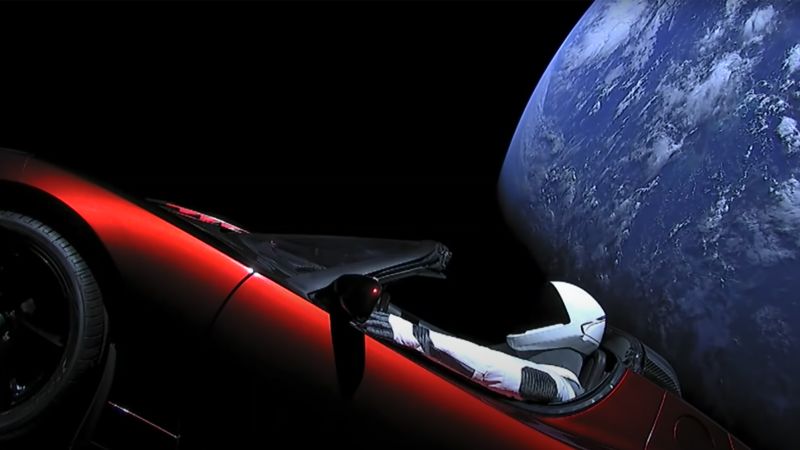In an era marked by rapid advancements in space exploration, a curious incident involving a Tesla Roadster launched into orbit has captured the attention of astronomers once again. Seven years post-launch during SpaceX’s Falcon Heavy rocket’s inaugural flight, the cherry red sports car, owned by entrepreneur Elon Musk, was mistakenly identified as an asteroid by space observers, leading to an intriguing case of mistaken identity.
Originally blasted into space in February 2018, the car was a showpiece in a high-profile demonstration of the Falcon Heavy’s capabilities. However, it resurfaced on the radar of space enthusiasts and professionals alike when a citizen scientist in January noticed a series of observations that seemed to delineate the trajectory of a small, unidentified object navigating between the orbits of Earth and Mars. Believing this object to be a previously undocumented asteroid, the amateur astronomer submitted the findings to the International Astronomical Union’s Minor Planet Center (MPC), based at the Harvard-Smithsonian Center for Astrophysics in Cambridge, Massachusetts.
To the initial delight of this citizen scientist, the MPC confirmed the observations and designated the object as asteroid “2018 CN41.” However, this designation was short-lived; within 24 hours, the center retracted the classification when it was revealed that the data had, in fact, been comprised of various uncorrelated observations of Musk’s original car. MPC astronomer Peter Veres clarified that their systems had failed to recognize this error, emphasizing the tricky nature of determining the identities of such celestial objects.
Musk’s car, far from serving any scientific purpose, has now become a hefty piece of orbital debris expected to wander aimlessly in space for eternity. Although it poses a minimal chance of impacting Earth, the incident underscores the challenges astronomers face in categorizing and tracking the ever-increasing number of human-made structures in terms of contrasting them with natural asteroids and other celestial bodies.
NASA’s Paul Chodas, director of the Center for Near-Earth Object Studies at the Jet Propulsion Laboratory in Pasadena, California, noted that the incident was neither surprising nor isolated. Other cases abound, including the misidentification of a Chinese rocket booster as a SpaceX craft and a segment of the historic Apollo 12 mission’s Saturn V rocket that returned to Earth’s orbit without clear identification.
As space agencies and private companies ramp up their launch schedules, with SpaceX, for instance, firing off nearly 140 rockets in 2024 alone, the volume of human-made debris continues to grow. This surge raises pressing concerns about tracking these objects, as many remain unaccounted for due to a lack of reliable databases cataloging their orbits. Veres pointed out the ongoing difficulty for the MPC and NASA in distinguishing between naturally occurring celestial objects and human-made ones, especially given that current efforts are focused primarily on the former.
Both NASA and MPC are collaborating to improve data integration to incorporate details about human-made objects, but Veres acknowledged the significant challenges posed by the ongoing launches, essentially asserting that the issue, while being addressed, is far from a foolproof solution. The rapid development of the commercial space industry means that private companies are not always transparent about the trajectories of the objects they place in orbit, complicating the efforts of astronomers dedicated to mapping celestial bodies.
The pressing question around the potential will come from emerging companies like AstroForge, headquartered in Huntington Beach, California. This start-up plans to send a spacecraft named Odin to explore asteroids for potential mining opportunities. Such missions only complicate monitoring as the frequency of launches increases while a centralized means of tracking becomes elusive.
Furthermore, national security concerns result in the withholding of data vital to tracking and identifying celestial objects. The American Astronomical Society has voiced anxiety regarding these practices, urging scrutiny over restrictions applied to publicly available tracking information, especially for deep-space objects. This accountability is emphasized in calls to improve transparency, a critical factor for effective space situational awareness, and overall safety in navigating our expanse of the universe.
As we look to the future, the importance of vigilant tracking of both natural and human-made celestial objects cannot be overstated. With the ongoing mingling of commercial and public space endeavors, savvy management and cooperation among a range of entities will be vital in avoiding confusion and ensuring the informed exploration of the cosmos.



